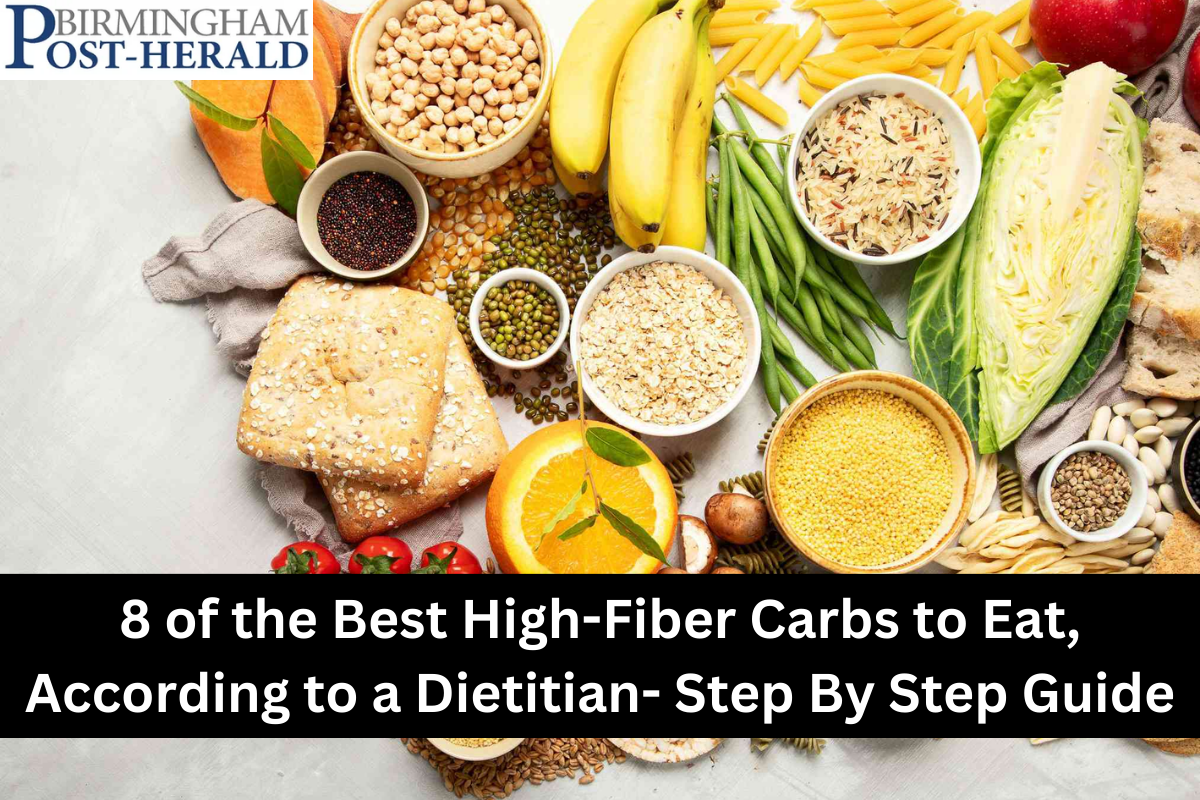8 of the Best High-Fiber Carbs to Eat, According to a Dietitian :- For energy and health, fiber and carbs are essential in a balanced diet. Undigested carbs are fiber. It regulates bowel movements, lowers cholesterol, provides heft to low-calorie meals, and inhibits sugar absorption. If you eat like most Americans, you probably don’t get enough fiber.
Fiber boosts satiety, weight management, and lowered risk of chronic diseases like heart disease and diabetes.1 You can meet your fiber demands by eating more high-fiber carbohydrates. Eight high-fiber carbs are listed here, along with recommendations on how to eat them.
8 of the Best High-Fiber Carbs to Eat, According to a Dietitian
:max_bytes(150000):strip_icc()/HighFiberCarbs-f44a5bf98ce944cca62943136af07b7a.jpg)
1. Oats
- A one-cup serving of cooked plain instant oats in water has 3.98 grams (g) of fiber. Oats contain 5.55 grams of protein per cup of cooked instant oats.
- Soluble fiber in oats produces a gel in the gut, lowering cholesterol and blood sugar.3 Beta-glucan, a soluble fiber in oats and barley, promotes satiety, weight management, and cholesterol and post-meal blood sugar reduction.
- Rolled oats cook in minutes, making them a quick and adaptable option to add fiber to your diet. Cook oats in your favorite milk to get more nutrients. Try fruits, nuts, seeds, and spices like cinnamon and nutmeg.
2. Barley
- Like oats, barley has an unbroken grain kernel. Whole grains provide fiber, B vitamins, vitamin E, magnesium, iron, and antioxidants. Pearled barley, the most popular kind, has 5.97 grams of fiber per cup.
- Whole grains like barley include prebiotics. Prebiotics maintain intestinal equilibrium and enhance beneficial gut bacteria.
- Simmer barley in water or broth for 30 minutes to prepare it like rice. Once cooked, barley makes a nutritious base for soups, salads, pilafs, or as a side dish with roasted vegetables or grilled meats.
3. Brown Rice
- One cup of cooked long-grain brown rice has 3.23 grams of fiber.89 Brown rice has twice as much fiber, vitamin B6, magnesium, and potassium as white rice.
- Rice is used in stews, stir-fries, and side dishes. Other options include packing brown rice into lettuce wraps for a robust grain filling or making a rice pudding parfait with berries, bananas, and toasted nuts.

Also See :- Health Benefits of Bananas- Step By Step Guide
4. Buckwheat
- Though named after wheat, buckwheat is gluten-free. Buckwheat yields flour and groats. The pseudo cereal buckwheat has nutritional and culinary similarities to wheat and rice.
- Roasted buckwheat groats have 4.54 grams of fiber and 5.68 grams of protein per cup. It delivers 20% or more magnesium, copper, and manganese daily.
- Shops sell buckwheat flour and toasted or raw groats. Toasted groats improve salads. Stir one cup of dried buckwheat groats into two cups of liquid, boil, and simmer 20 minutes. As cereal or rice substitute, buckwheat works.
5. Quinoa
- Quinoa is a pseudo cereal and whole-grain seed. Cooked quinoa has 5.18 grams of fiber per cup.
- Complete proteins like quinoa include all nine necessary amino acids. New Quinoa and Chia Seed Nutritional and Functional Perspectives and Health Benefits. As the body cannot synthesize amino acids, they must be acquired from the diet.
- Cooked quinoa has 8.14 grams of protein per cup. It’s rich in B vitamins and minerals, including 28% of the DV for magnesium, which regulates blood pressure and diabetes.13814 Quinoa contains cholesterol-lowering phytosterols.13
- Cooking quinoa takes less time than rice. It goes in soups, salads, stuffed bell peppers, and chili.
6. Legumes
- Beans, peas, and lentils include fiber, plant protein, B vitamins, iron, and folate. They’re a vegetable serving. Legumes also include antioxidants that fight cell damage, illness, and aging.
- Canned low-sodium black beans have 16.6 grams of fiber per cup, whereas boiling lentils have 7.9 grams.1718 Drained canned green peas have 3.48 grams of fiber per half-cup, and cooked edamame has 8 grams per cup.
- Add cooked beans or lentils to soups, salads, stir-fries, or baked potatoes or tacos for protein. Make hummus or bean spreads for sandwiches and wraps by pureeing legumes. Dip-friendly vegetables include carrots and broccoli.
7. Berries
- Fiber-rich berries are famous. One cup of sliced strawberries has 3.32 grams of fiber, while blueberries have 3.55 grams.2122 Raspberry and blackberry one-cup servings contain 8 and 7.63 grams of fiber, respectively, making them high-fiber foods.
- Berries include vitamin C, folate, potassium, and antioxidant- and anti-inflammatory phytochemicals. Add a handful of fresh berries to your cereal, yogurt, or oatmeal for taste and fiber. For a healthy and refreshing snack, add berries to smoothies or salads.
8. Sweet Potatoes
- Healthy sweet potatoes are abundant in fiber. One cup of roasted sweet potato skin offers 6.6 grams of fiber.25 Skinned potatoes have greater fiber. Vitamins A, C, B6, potassium, and manganese in sweet potatoes improve eye, immune, energy, and heart health.
- Scrub, fork-pierce, and wedge sweet potatoes to bake or fry until done. They can be diced for boiling, steaming, or mashing. Try them with honey, cinnamon, almonds, or seeds.
Can You Eat Too Much Fiber or Carbs?
- Fiber and carbs are good, but too much can be unhealthy. The body gets energy from sugars, carbs, fruits, vegetables, legumes, and fiber. Dietary guidelines require 45–65% carbs. However, eating too much white bread, pastries, drinks, and processed meals can cause obesity, type 2 diabetes, and heart disease. Dental cavities are linked to sugar.
- High fiber intake without enough water can cause bloating, diarrhea, and intestinal blockage.7 Fiber should be reduced in persons at risk of phytobezoars, thick fiber masses that clog the digestive tract. Fiber should be added cautiously over weeks to avoid GI distress. Drink more water to avoid dehydration and digest fiber.
If you like this Article 8 of the Best High-Fiber Carbs to Eat, According to a Dietitian please share with your friends And Family members.
